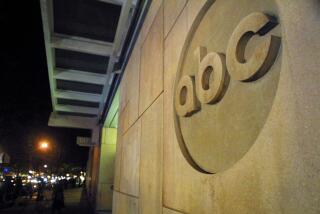Honeywell to Cut Work Force 8% : Restructuring Aimed at Improving Competitive Position
- Share via
MINNEAPOLIS — Honeywell Bull Inc. said Thursday that it will eliminate nearly 8% of its work force under a restructuring program aimed at improving the company’s competitive position.
Other changes slated under the program include the realignment of Honeywell Bull’s domestic marketing and distribution arm and the consolidation of some plants.
For the record:
12:00 a.m. Nov. 19, 1987 FOR THE RECORD
Los Angeles Times Thursday November 19, 1987 Home Edition Business Part 4 Page 2 Column 6 Financial Desk 2 inches; 39 words Type of Material: Correction
A headline in the Nov. 13 Business section inaccurately read, “Honeywell to Cut Work Force 8%.” In fact, the personnel reduction was by Honeywell Bull Inc., not by Honeywell Inc. The two companies are independent entities. The article itself used the name of the correct company.
Jerome J. Meyer, the company’s president and chief executive, said the 1,600 jobs to be cut are “redundant or non-essential” positions. The information systems vendor currently employs 20,500 people.
The reductions will be made through voluntary and involuntary layoffs as well as attrition and early retirement over the next year, Meyer said.
At the same time, however, the company expects to add “several hundred” positions in areas such as software development, field sales and field technical support. Spokesman Bruce MacDonald said some of the employees facing layoffs could be considered for the new positions, but he did not know how many.
The work-force reductions will include about 800 of Honeywell Bull’s 3,100 employees in Phoenix, 500 of the 4,700 employees in the Boston area, and 300 elsewhere, said company spokeswoman Shelley Potter.
Better Responsiveness
Early retirements are expected to account for 20% to 25% of the cuts, but she had no breakdown on how the other positions will be eliminated. About 1,000 of the jobs are in manufacturing and its support services, with marketing, sales, service and other areas accounting for the rest.
Meyer said the restructuring will result in better customer responsiveness and cost efficiency.
“As I stated when Honeywell Bull was formed, the company had to address the issues of product line rationalization and excess capacity and move accountability closer to the customer,” Meyer said.
“These changes come during a time of strong performance for Honeywell Bull,” he said. “We have achieved a 10% overall growth in revenues this year, with even more significant growth in some of our markets. We continue to be profitable and forecast ending the year on the same positive note.”
Honeywell Bull, based in Minneapolis, was formed in March by Groupe Bull of France, Honeywell Inc. of Minneapolis and NEC Corp. of Japan.
Revenue for 1986 was $1.9 billion.
The company said it will begin producing new products at its facility in Lawrence, Mass., while Phoenix will remain the center of development for the company’s large-scale mainframe computers. Engineering, marketing and other management functions supporting the large computer business will continue in Phoenix.
The transition, which involves transferring large systems production from Phoenix, will occur in stages over the next 12 months.
Office Consolidation
“Like all computer vendors, technology advances have led to a situation where we require less manufacturing labor and space per assembly,” Meyer said. “This has resulted in excess manufacturing capacity and an opportunity for considerable savings in this area.”
In addition, the company said it will consolidate its Massachusetts offices over the next 18 months. Several area offices will be relocated to a new facility that will be built adjacent to the company’s existing offices in Billerica, Mass.
Meyer said the realignment of the company’s U.S. marketing, sales and service group follows a corporate reorganization in late July that combined those groups. The new organization, led by executive vice president John C. Butler, integrates these functions in support of six major operating units.
More to Read
Inside the business of entertainment
The Wide Shot brings you news, analysis and insights on everything from streaming wars to production — and what it all means for the future.
You may occasionally receive promotional content from the Los Angeles Times.










